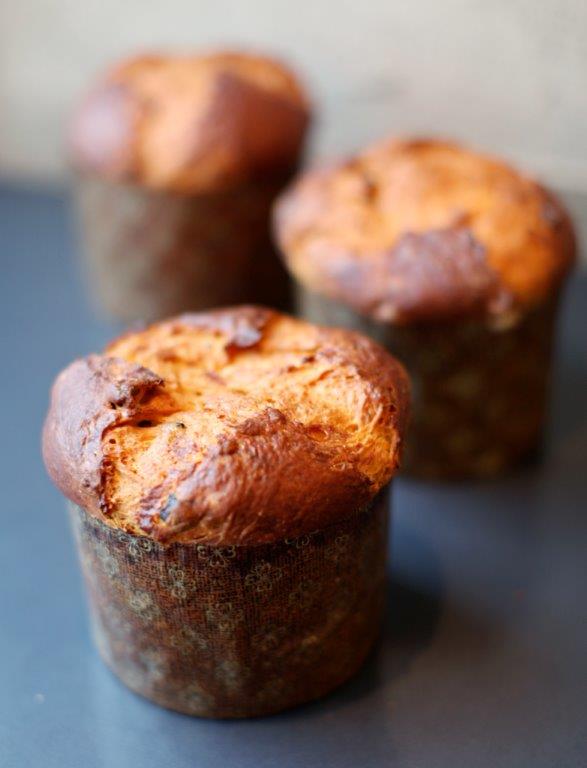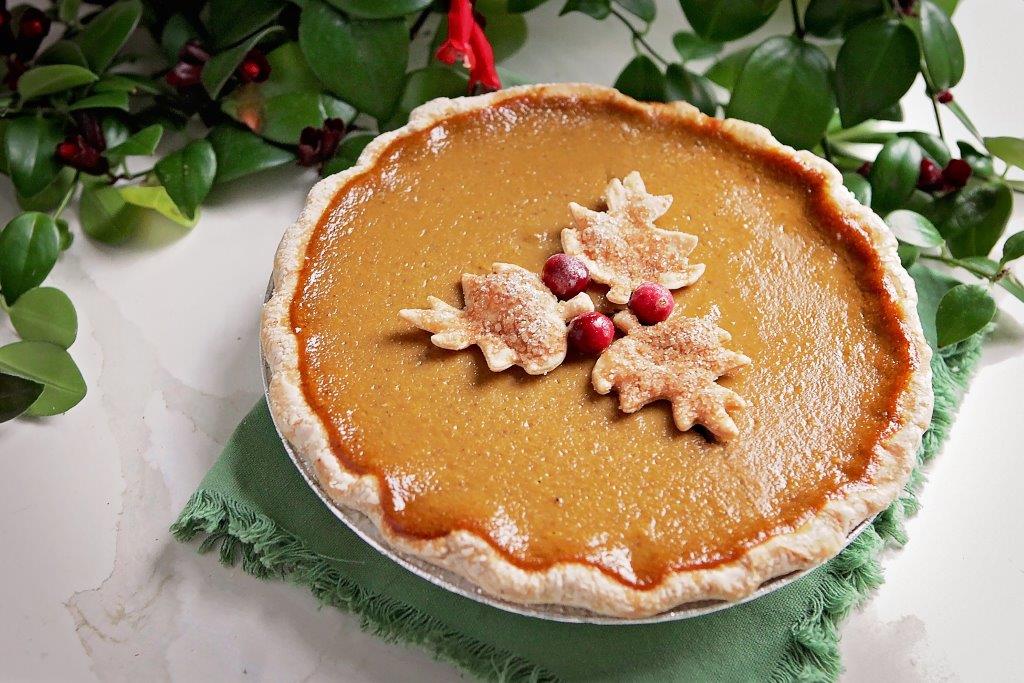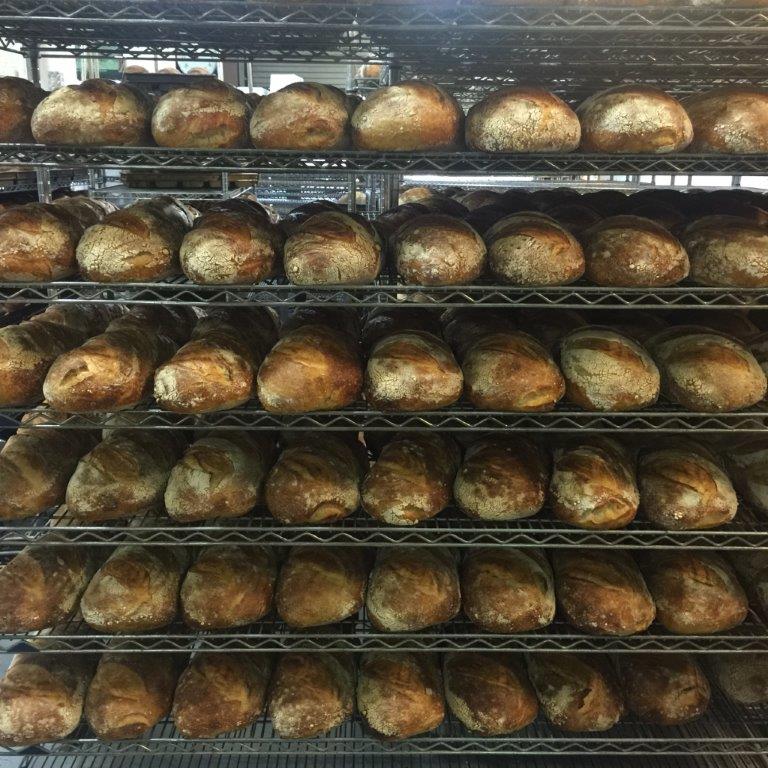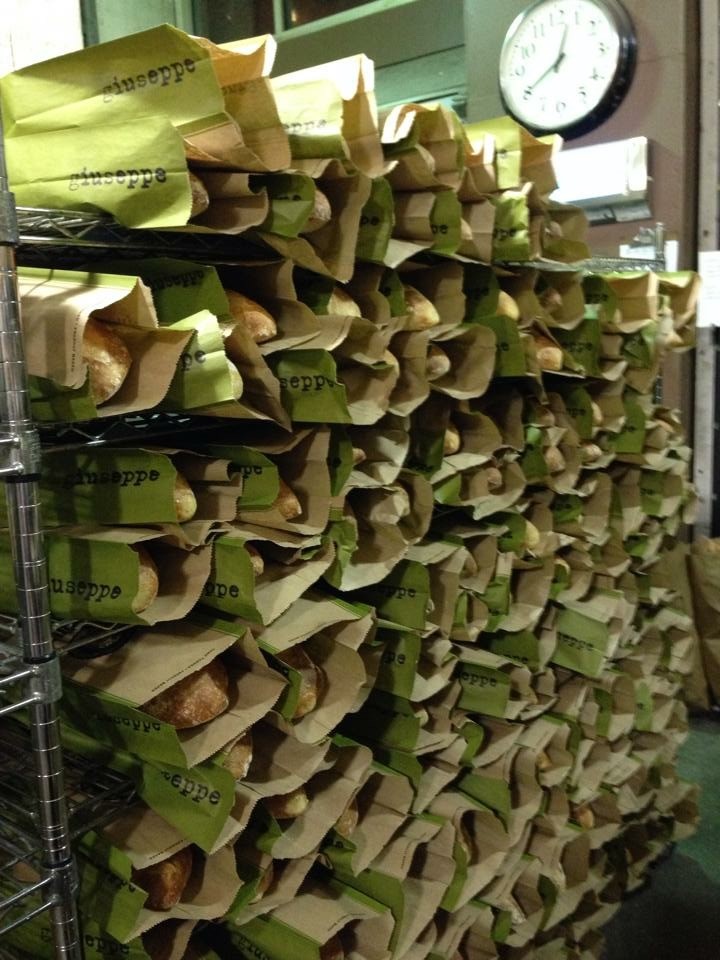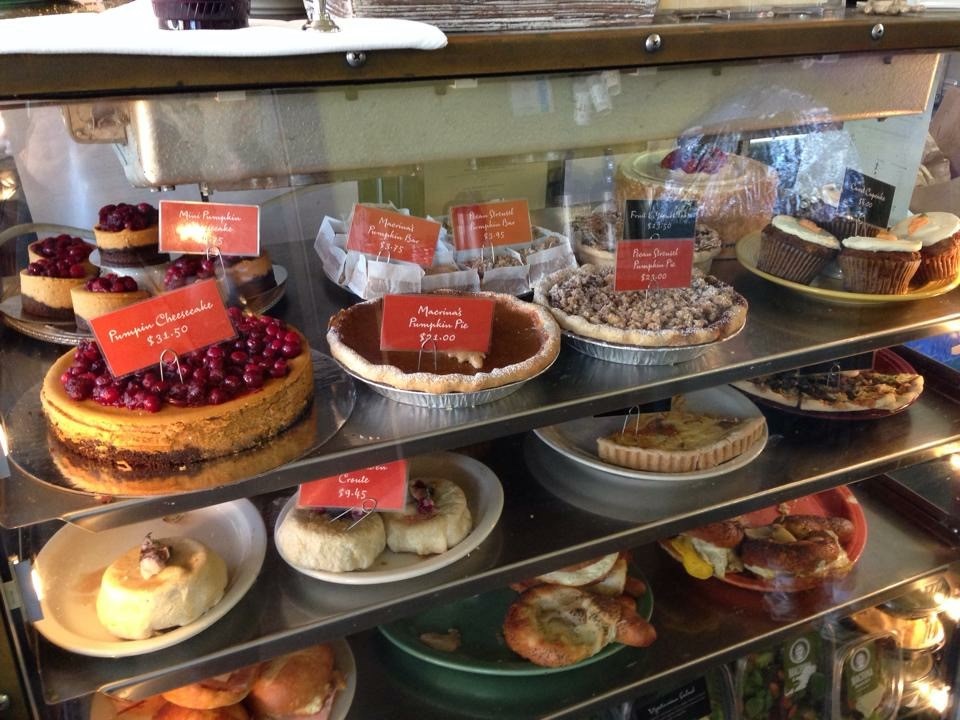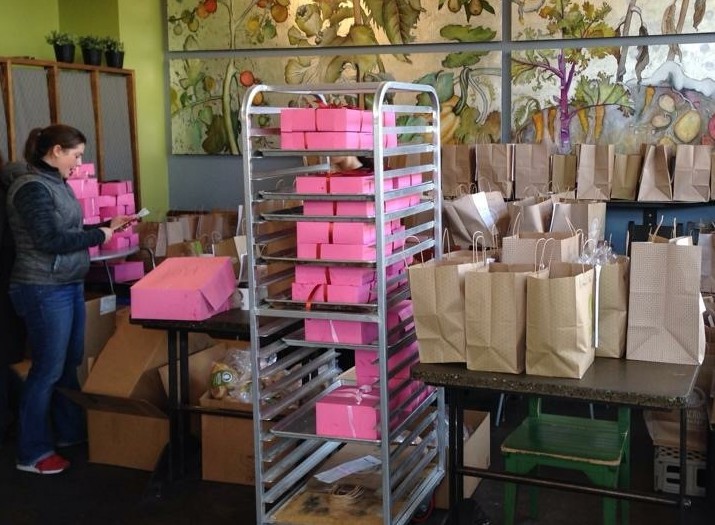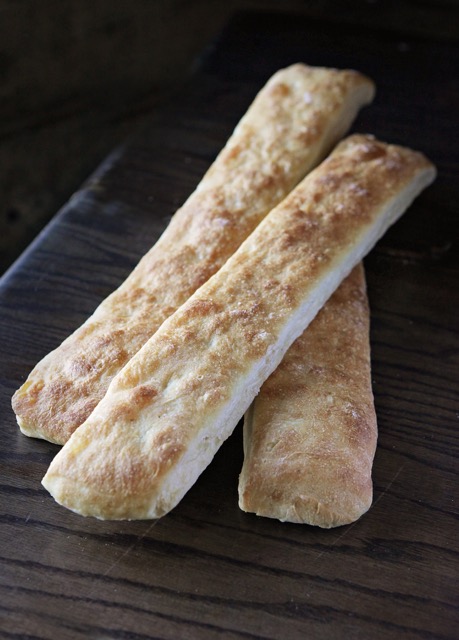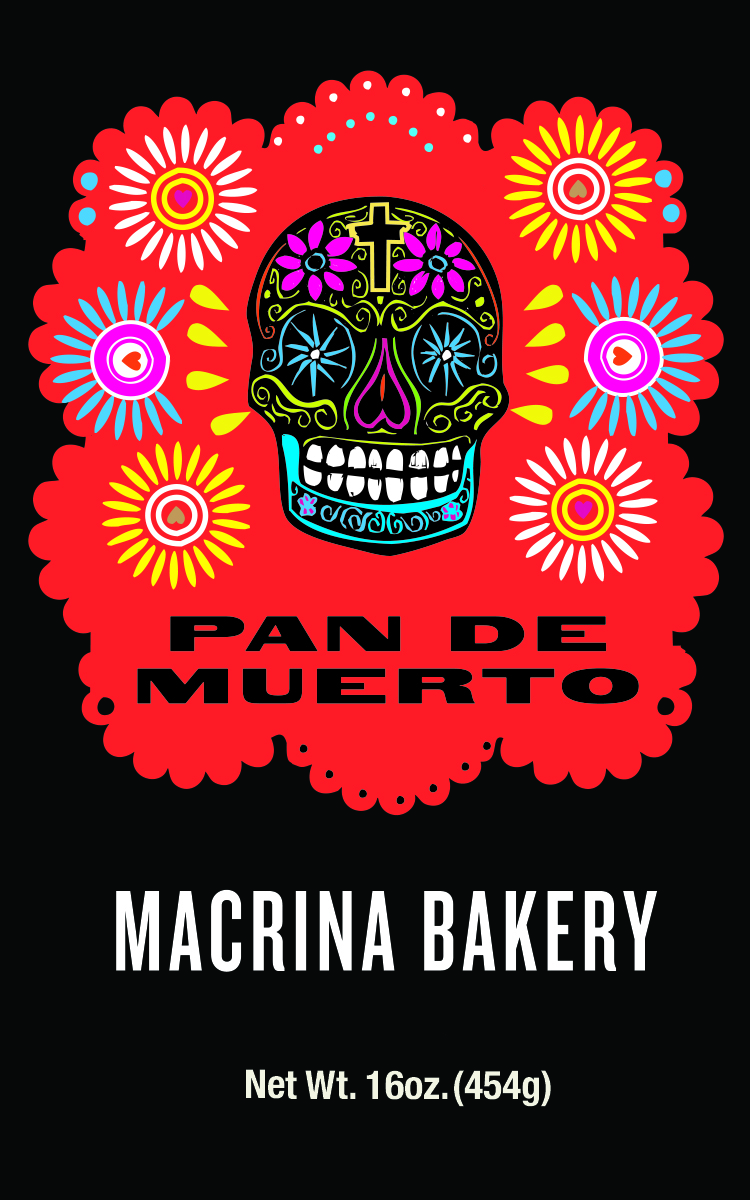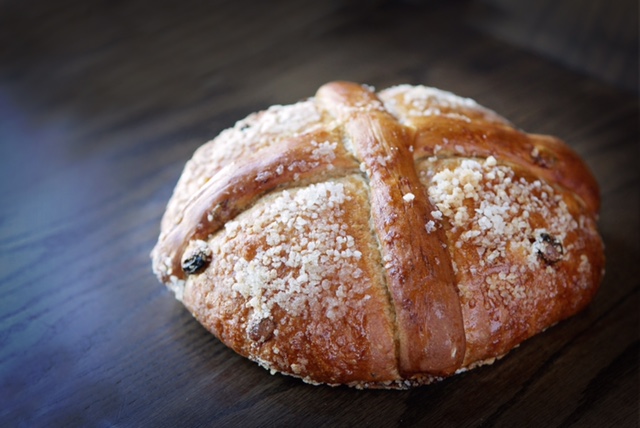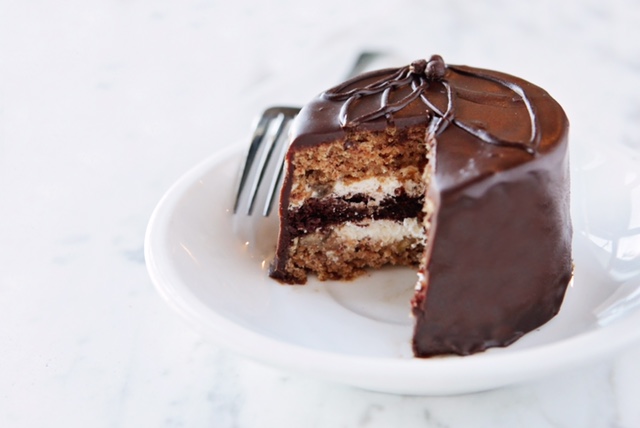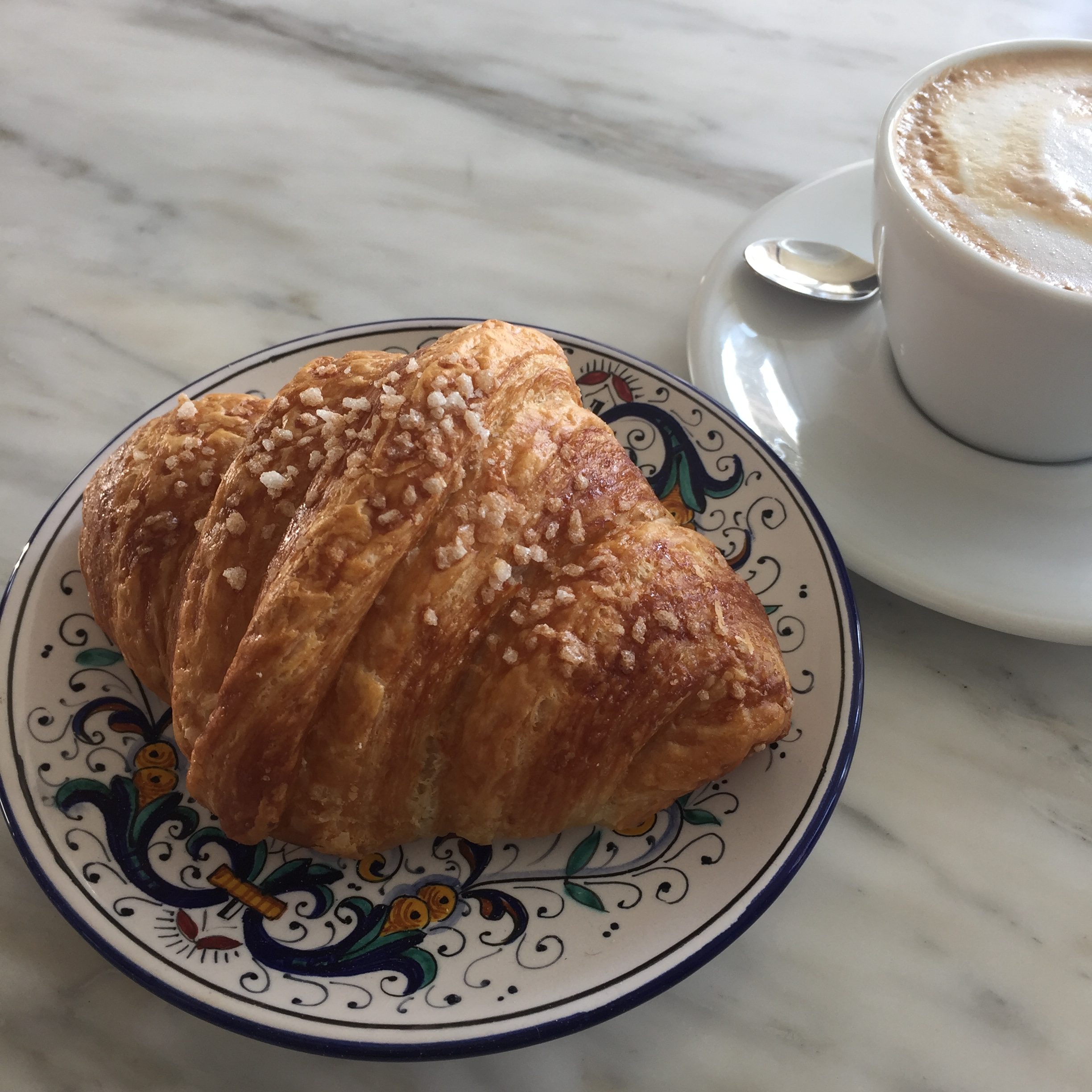
For years, my business partner, Matt has asked if we could make cornetto. Matt spent a year living in Italy and became quite enamored of the Italian breakfast – a stop at the local café on the way to work, a beautiful cappuccino, a cornetto and an animated conversation, usually about soccer. Every time Matt asked, I had to tell him we don’t have enough space. Well, this summer, we moved into our new production facility. There is space and I am finally able to grant Matt’s wish!
Cornetti are often referred to as the Italian cousin to the French croissant. Cornetti are made with laminated dough. Buttery dough is repeatedly folded and rolled to lace the dough with thin layers of butter fat. This creates a moist and flaky texture. Macrina’s laminated dough is slightly sweeter and made with a smidge less butter to create the perfect texture. We use the laminated dough to make our Cornetto, Chocolate Cornetto, Morning Rolls and Orange Hazelnut Pinwheels.
The story behind laminated pastry is an interesting one. It seems to have originated in Austria with a pastry called a kipferl. Some say the crescent shape was created to celebrate the Austrian defeat of the Ottomans whose flag carried an image of the crescent moon. Whether that story is myth or not, what is certain is that the pastry spread throughout Europe with regional and national differences.
Recently, The New Yorker published a story, “Straightened-out Croissants and the Decline of Civilization” after one bakery in England started making their croissants un-curved. We have wisely opted to stay out of the centuries old England-France controversy. Our cornetti are slightly curved and available in our cafes and for wholesale sales. Come down to one of our cafés, order a cappuccino and a cornetto, and treat yourself to an Italian breakfast (while you read the New Yorker article, it is a fun one!)
Leslie
Cornetto (pictured above): “Little horn” in Italian. We form our cornetti from a triangle of our laminated dough rolled to create a crescent shape, brushed with egg wash and sprinkled with pearl sugar and baked to a deep brown. Lightly sweet, flaky on the outside and moist inside. Enjoy plain or with fresh preserves.
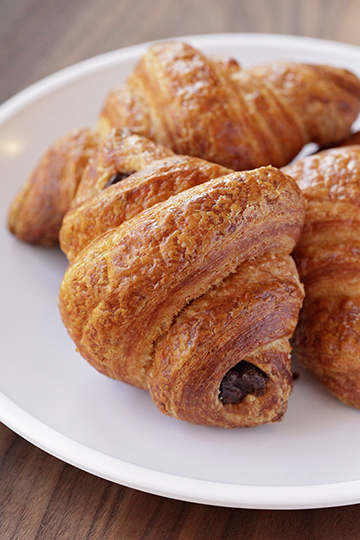
Chocolate Cornetto: Our cornetto filled with batons of semisweet chocolate.
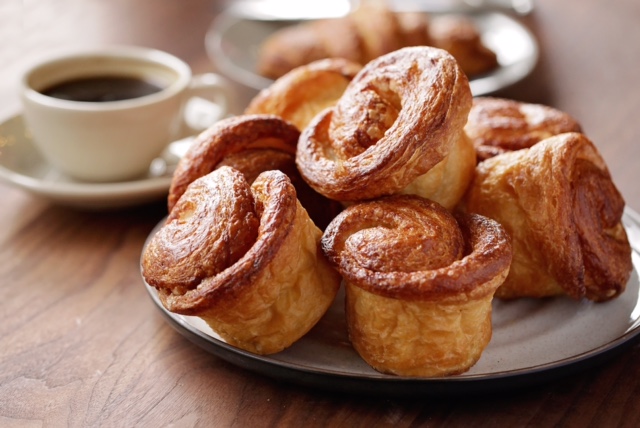
Morning Rolls: Our laminated dough layered with house-made vanilla sugar and rolled into a swirl. Baked to a golden brown. Flaky and light with buttery caramelized sugar at the base.
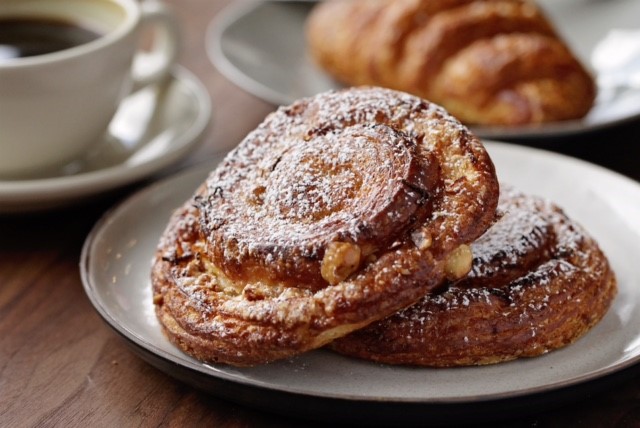
Orange Hazelnut Pinwheels: Our laminated dough layered with house-made hazelnut sugar and fresh orange zest, rolled into a pinwheel and baked golden brown. Dusted with powdered sugar. Flaky and sweet with just the right touch of citrus.

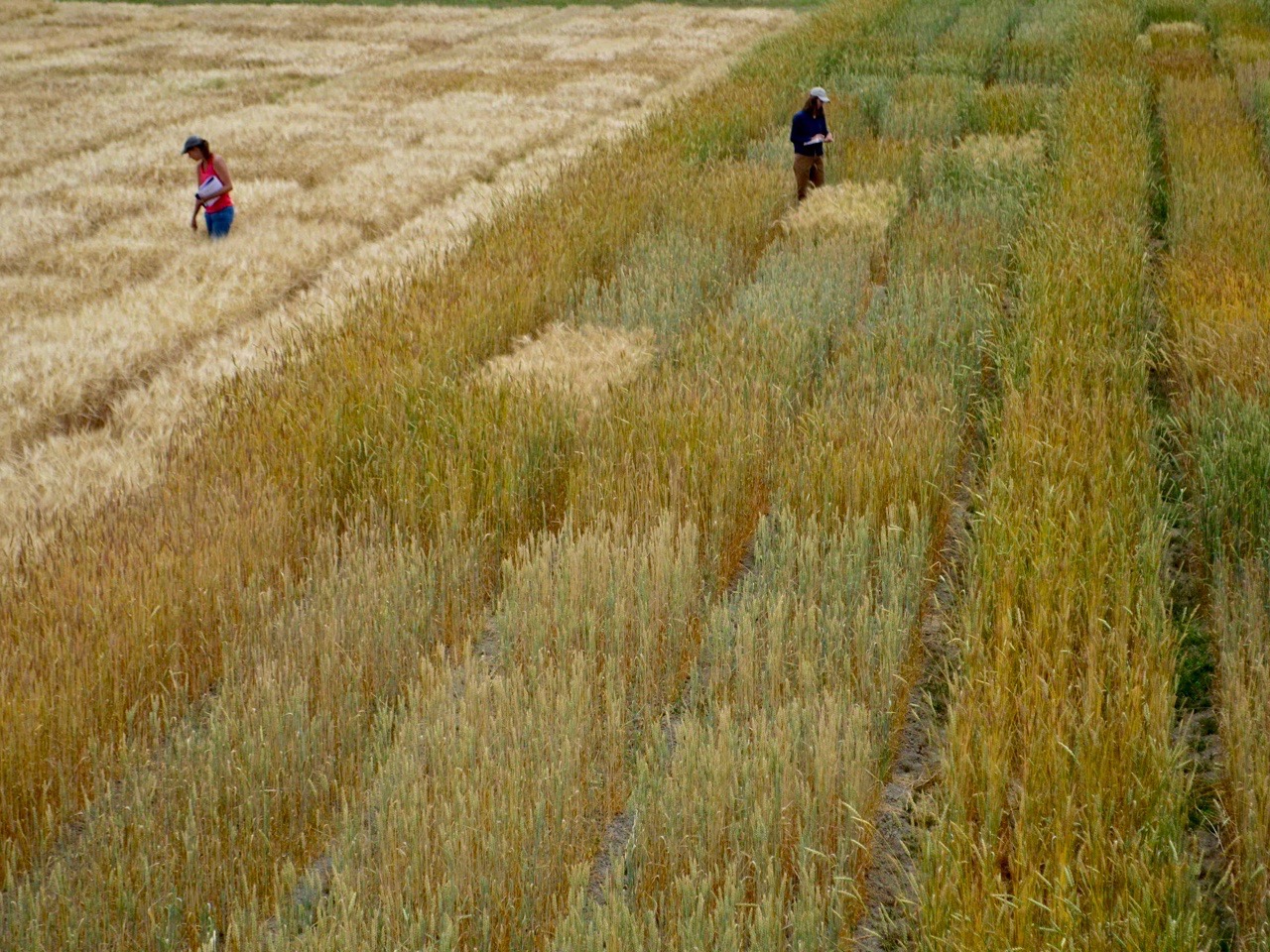 The flour most of us are familiar with—the inert, white powdery stuff from the supermarket with a long shelf life—is a very modern development in our long relationship with wheat, the most important food in history. Before industrial agriculture became dominant, milling was done at regional mills with diverse strains of wheat. The effort to create uniform flours that won’t spoil has taken much of the flavor and nutrition from our flour and the products made with it.
The flour most of us are familiar with—the inert, white powdery stuff from the supermarket with a long shelf life—is a very modern development in our long relationship with wheat, the most important food in history. Before industrial agriculture became dominant, milling was done at regional mills with diverse strains of wheat. The effort to create uniform flours that won’t spoil has taken much of the flavor and nutrition from our flour and the products made with it.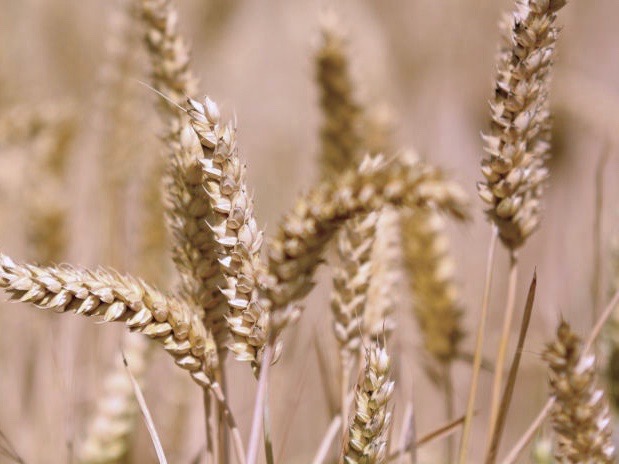
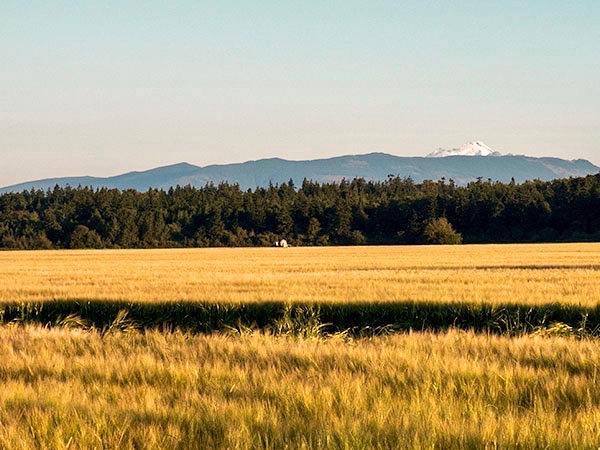 Every year The Bread Lab hosts an annual conference called Grain Gathering. Professional bakers, bread enthusiasts, brewers, farmers, and chefs from around the country descend on the Skagit Valley. Workshops, panel discussions, and demonstrations cover a range of wheat-centered topics (I’ve learned lots from these over the years). At the 2015 event, they held a bread tasting for a group of experienced bakers. We tasted seven breads, each made with a different locally grown wheat. For each loaf the recipe was essentially the same, with small adaptations made to create the best loaf with each flour. The varying tastes, textures, and the overall natural sweetness was a revelation. The flour made all the difference. The experience inspired my commitment to bringing more locally grown flours to the breads we make at Macrina.
Every year The Bread Lab hosts an annual conference called Grain Gathering. Professional bakers, bread enthusiasts, brewers, farmers, and chefs from around the country descend on the Skagit Valley. Workshops, panel discussions, and demonstrations cover a range of wheat-centered topics (I’ve learned lots from these over the years). At the 2015 event, they held a bread tasting for a group of experienced bakers. We tasted seven breads, each made with a different locally grown wheat. For each loaf the recipe was essentially the same, with small adaptations made to create the best loaf with each flour. The varying tastes, textures, and the overall natural sweetness was a revelation. The flour made all the difference. The experience inspired my commitment to bringing more locally grown flours to the breads we make at Macrina.
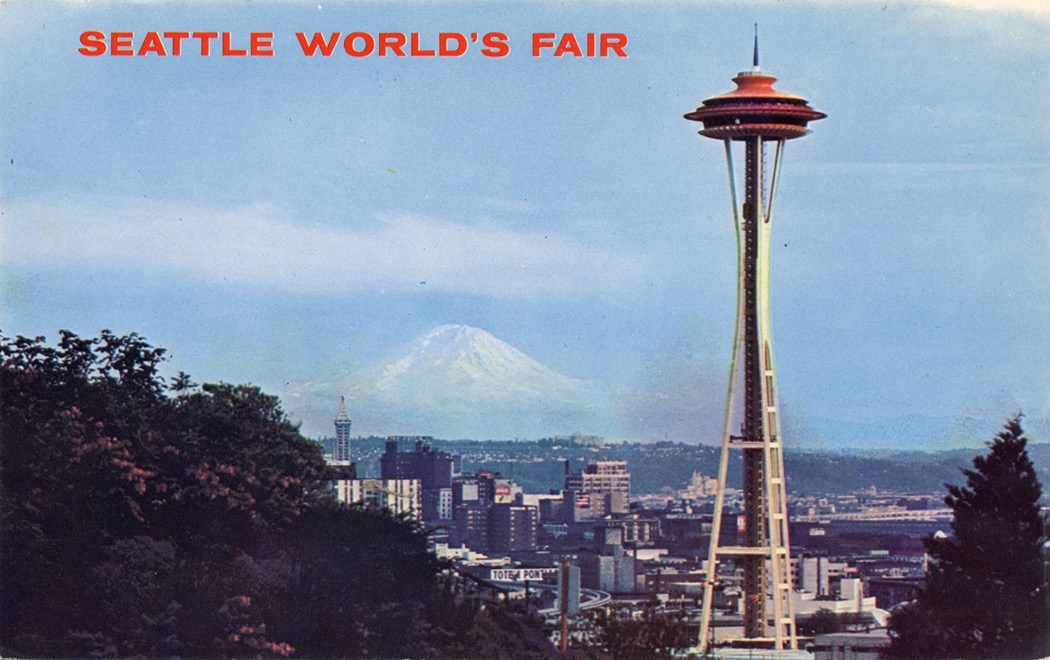 Billed as The Century 21 Exposition, the World’s Fair of 1962 in Seattle also featured the monorail. Just before the fair opened The New York Times wrote, “The high-speed, quiet monorail cars catapult northward from the heart of Seattle for a few breath catching moments, then glide to a stop. There suddenly, all around you, are glimpses of the world of tomorrow.” The monorail was the time-traveling Delorean carrying hordes of visitors to the world of tomorrow.
Billed as The Century 21 Exposition, the World’s Fair of 1962 in Seattle also featured the monorail. Just before the fair opened The New York Times wrote, “The high-speed, quiet monorail cars catapult northward from the heart of Seattle for a few breath catching moments, then glide to a stop. There suddenly, all around you, are glimpses of the world of tomorrow.” The monorail was the time-traveling Delorean carrying hordes of visitors to the world of tomorrow.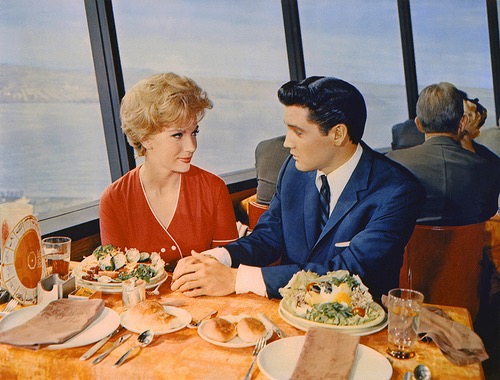 Another fun fact: Elvis filmed a movie at the Space Needle during the World’s Fair named, aptly enough, “It Happened at the World’s Fair.” In the Seattle Post-Intelligencer, reporter John Voorhees described the insanity surrounding The King: “The biggest attraction at the World’s Fair continues to be Elvis Presley, who may turn out to be the biggest boon to the sellers of camera film since the Space Needle was unveiled.”
Another fun fact: Elvis filmed a movie at the Space Needle during the World’s Fair named, aptly enough, “It Happened at the World’s Fair.” In the Seattle Post-Intelligencer, reporter John Voorhees described the insanity surrounding The King: “The biggest attraction at the World’s Fair continues to be Elvis Presley, who may turn out to be the biggest boon to the sellers of camera film since the Space Needle was unveiled.” Through all this growth the Space Needle has provided a spectacular revolving view of the city’s evolution; neighborhoods torn down to build Interstate 5, construction cranes raising Belltown to new heights, new high-rise towers, more cranes, more towers, and suburbs oozing further north, east, and south.
Through all this growth the Space Needle has provided a spectacular revolving view of the city’s evolution; neighborhoods torn down to build Interstate 5, construction cranes raising Belltown to new heights, new high-rise towers, more cranes, more towers, and suburbs oozing further north, east, and south. And lastly, while you’re enjoying your meal don’t forget that only the interior rotates, not the external structure. If you set your drink on the window ledge, it’ll slowly drift away from you. More than a few enterprising and frugal drinkers have enjoyed their neighbors fine scotch, or their cocktail; one after the next, helpless to resist as they just kept appearing on the window ledge next to their table.
And lastly, while you’re enjoying your meal don’t forget that only the interior rotates, not the external structure. If you set your drink on the window ledge, it’ll slowly drift away from you. More than a few enterprising and frugal drinkers have enjoyed their neighbors fine scotch, or their cocktail; one after the next, helpless to resist as they just kept appearing on the window ledge next to their table.





